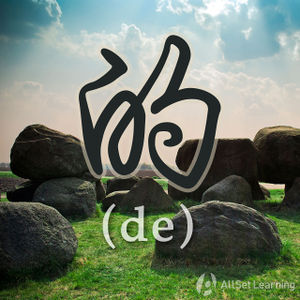Difference between revisions of "Reduplication of adjectives"
| Line 46: | Line 46: | ||
[[Category:Adjectives]] | [[Category:Adjectives]] | ||
| − | {{Basic Grammar| | + | {{Basic Grammar|的|B1|Adj + Adj|你 应该 <em>慢慢</em> 地 走。|grammar point|ASGDHE8S}} |
{{POS|Adjectives}} | {{POS|Adjectives}} | ||
{{Used for|Expressing quality}} | {{Used for|Expressing quality}} | ||
{{Similar|Simple "noun + adjective" sentences}} | {{Similar|Simple "noun + adjective" sentences}} | ||
{{Similar|The "zui" superlative}} | {{Similar|The "zui" superlative}} | ||
Revision as of 07:51, 25 September 2012
-
Level
-
Similar to
-
Used for
-
Keywords
Basic patterns
One way to intensify adjectives is to reduplicate them. This creates a sense of "really" or "very", and makes the descriptive power of the adjective stronger.
Adj + Adj + 的
In most Chinese textbooks and grammar books, this is known as the "AA" pattern. For example:
- 妈妈的手 暖暖的。
- 你的 脸 红红的。
- 果汁 甜甜的。
If the adjective has more than one character, then you should repeat each character individually. This is known as the "AABB" pattern. Examples:
- 高高兴兴
- 舒舒服服
- 糊糊涂涂
Note: The "AABB" pattern for reduplication of two-syllable adjectives contrasts with the "ABAB" pattern for reduplication of two-syllable verbs.
See also
Sources and further reading
Books
- Mandarin Chinese: A Functional Reference Grammar (pp. 32-6) →buy
- New Practical Chinese Reader 3 (新实用汉语课本3) (pp. 50) →buy
- New Practical Chinese Reader 4 (新实用汉语课本4) (pp. 103-4) →buy



